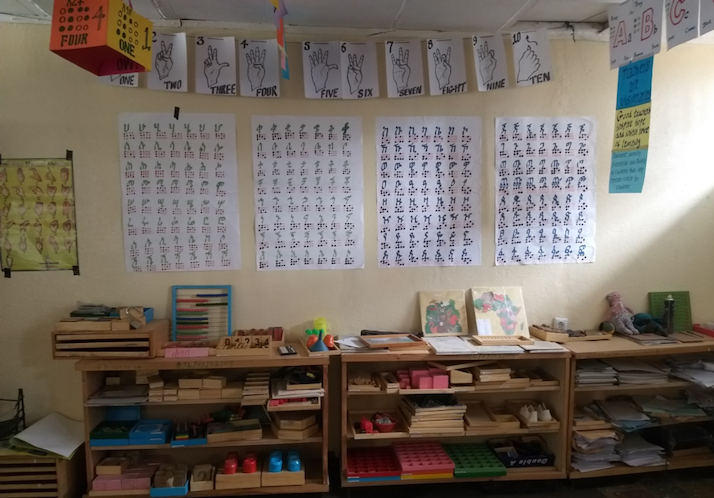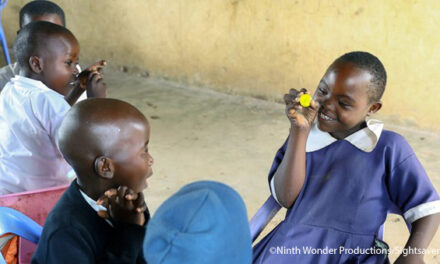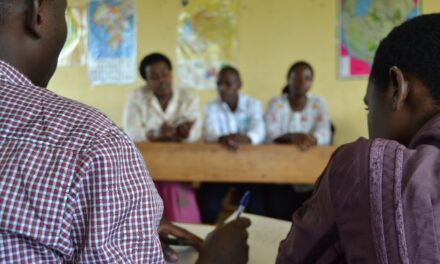This blog was written by Yisak Tafere, lead qualitative researcher for the RISE Ethiopia Country Research Team based at the Policy Studies Institute in Ethiopia. It was originally published on the RISE Programme website on 6 August 2020.
In recent years, Ethiopia has rapidly expanded primary school enrolment to achieve near-universal attendance. Yet learning levels are low and progress in learning goals appears to have stalled in recent years. As a result, even when children finish many years of schooling, they still lack needed skills. The RISE Country Research Team is conducting a five-year research project to examine whether and how a large package of national reforms can improve learning equity in one of the world’s poorest and most diverse countries.
As part of RISE Ethiopia’s research agenda, a qualitative study was designed to document the implementation of the General Education Quality Improvement Programme for Equity (GEQIP-E) reforms in selected schools and the impact of the reforms as perceived by school and community stakeholders. This builds on a quantitative survey that examines if and how GEQIP-E is improving learning outcomes, particularly for children who face different types of vulnerability (including girls, students with disabilities and students from pastoralist households).
The first round of the qualitative study was carried out in early 2020. Five schools were selected from four regions: Oromia, Benishangul-Gumuz (two schools), Tigray and Addis Ababa, which represent rural/urban and lowland/highland locations. The selections took into account the diversity in programme implementation of the GEQIP-E, and the availability of students with different vulnerabilities in terms of disability and gender.
The research team carried out the data collection in the months of February and March 2020 in all five selected sites. Here, we provide some initial reflections based on the fieldwork. The GEQIP-E reforms aim to support vulnerable children to ensure equity in education. In reviewing preliminary results, we reflect on emerging findings of available support, the delivery process and challenges faced by children with disabilities (CWD) and girls.
Challenges for children with disabilities (CWD)
Late or no identification
The identification process of CWD is carried out in schools with some support from Inclusive Education Resource Center (IERC) coordinators. This involves observation of fully disabled students (deaf, blind or physical disability), follow up by teachers in classrooms or through students self-reporting, and finally, medical examinations at a hospital to establish the extent of the disabilities. Based on these criteria, schools identify CWD and send the list to the IERC to plan for support resources.
However, it was clear that identification was difficult. Observation of full disability was managed but identifying those with partial disability and some slow learning abilities was difficult for teachers or focal persons for children with special needs. In some rural areas, it was hard to get medical examinations to establish the magnitude of the disabilities.
Identification challenges emerged from poor screening processes by schools, reluctance by parents and children who do not want to be identified as having a CWD (for example, in Oromia and Benishangul-Gumuz schools). Usually, students with minor disabilities are identified gradually, based on observation by their teachers. This hampers any support that children should have received at an early age. For example, a boy from the Addis Ababa school, who has a visual problem, was identified through observation later, which has been affecting his performance in school. He said, “…one of the misses/teachers noticed that I couldn’t identify letters on blackboard. She told me to call my father to contact her at the school. And she told me that I should be bought eyeglasses. I repeated that grade for that reason.”
School infrastructure
Schools were not initially built with considerations for CWD and it is difficult to modify later. The principal of the Addis Ababa school indicated: “This building was constructed with no consideration to the needs of students with disability. With such buildings it is virtually impossible for the current school management to resolve the challenges of students with disability within a short period of time.”
There are no ramps, toilets or classroom facilities. However, some schools have modified spaces for ramps. A school principal in Addis Ababa school said: “For students with disability, we have arranged classes on the ground floor. We are also thinking to construct one ramp around the toilet.” The urban school in Benishangul-Gumuz has already built a ramp using the GEQIP-E school grant.
Support services
The urban schools, in coordination with their respective IERC, are providing assistive devices, such as sound recorders, canes, braille and others.
Some schools allocate a certain portion of the school grant to support CWD. But across schools, we observed that institutional support is very low and some local resources come from contributions from school principals or teachers.
Schools also assign a focal person for CWD, who follow up the children’s learning process. Most of the selected teachers are trained in handling children with special needs. They follow their learning, movements and sometimes provide counselling.
Reluctance to go to school
As the schools are not yet fully able to respond to the needs of CWD, some children are discouraged from going to school. In the rural communities, very few are going to school (for example, only one physically disabled child was attending the Oromia school), despite there being numerous CWD living in the communities.
Teachers’ training and overloading
The teachers involved with CWD have different levels of training. Some have taken university courses on how to handle children with special needs, with successive training coordinated by IERC. Others, particularly those at rural schools, have no or little training. Moreover, teachers who focus on CWD are overloaded with other activities and have little time to guide and support the CWD.
Challenges for girls
In all schools, to ensure equity in their learning, girls are supported in different ways. The schools help them to organise Girls Clubs by assigning a focal teacher and facilitating meeting places. Through their clubs and coordination by their focal teachers, they access some material support and tutorials. The resources come from the school, local NGOs or teachers’ contributions. Schools try to support girls by organising separate toilets, providing sanitary pads, as well as organising tutorial classes. However, we noted that schools have limited capacity to respond to girls’ demands.
Meeting places
Many girls join Girls Clubs, yet they do not have a place to meet. We observed meetings being organised outside school under trees, where the girls experienced bullying by boys and distractions by passers-by.
Limited school resources
In some schools there are not enough sanitary pads. In rural schools, some girls do not come to school when they have their period because they do not have pads. In other schools, as there are no toilets or running water, girls go home early and do not come back. A principal of the Benishangul-Gumuz rural school said: “As you may have seen it, the latrine for girls and boys is in the same building and is it not conducive for girls to use the open space. So, they have a good reason to go back home. Some of them ask permission while others just leave out through the fence.”
Limited participation
Families pressure girls to engage in domestic chores after school or on weekends, limiting the benefit of meetings or tutorial classes.
Concluding remarks
To ensure equity, some attempts are visible in the schools, but it was clear that they have limited capacity to respond to the needs of CWD and girls. For better achievement of equity, the GEQIP-E should consider the following:
- For the programme to be successful, it should have a strong focus on CWD and female students and relevant resources need to be provided. CWD need improved school facilities and teachers’ professional support. Girls require different support, such as sanitary pads which remain seriously scarce.
- To improve the support provided for CWD, teachers should receive the necessary training on how to identify, counsel, teach, and coordinate support for CWD.
- The study shows that urban school infrastructure and services for CWD are better than the rural ones. Hence, the disparity needs to be narrowed for vulnerable students between rural and urban schools.





